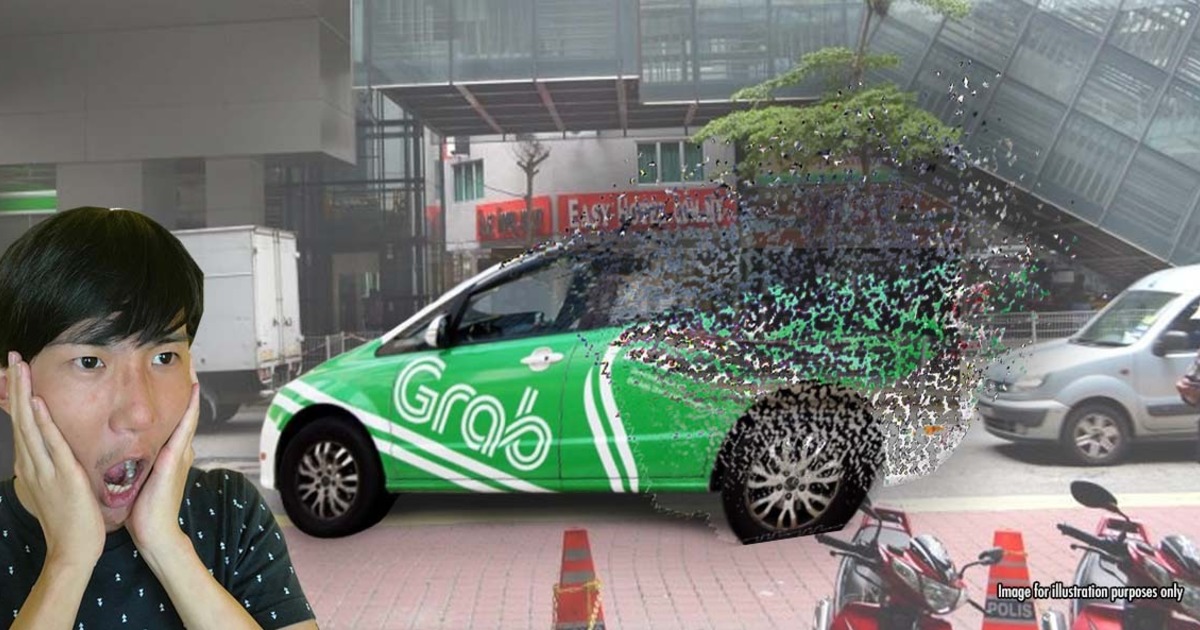

Consumer,General,Traffic
By Oct 12, there may be even LESS e-hailing drivers in Malaysia due to extra govt requirements
almost 6 years ago UiHuaWhen the government first announced the PSV (Public Service Vehicle) regulations for the e-hailing industry (ie, your MyCars, Mulas, and Grabs) back in July 2018, it seemed to provide a solution to the legal status of e-hailing in Malaysia. In short, e-hailing would go from grey-area-and-possibly-illegal to 100% legal, as long as certain requirements were met.
However, the news that followed was somewhat less than positive. You can skip to the next point if you’re already familiar with the backstory.
For one thing, drivers and companies had only 3 months to complete the process, which involved a medical checkup, car inspection, training, and a written test. While it sounds like a pretty simple process on paper, the PSV process ran into some problems in relation to language barriers, cost, and long wait times for the training and exams – you can check out our previous articles for details:
[READ MORE: 5 things e-hailing customers need to know about Malaysia's new e-hailing law]
[READ MORE: We went undercover to get an e-hailing (PSV) license. Here's what we found out]
All these factors led to estimations that 40% to 50% of e-hailing drivers may drop off from the market by the time the July 12th deadline hit, which would result in longer waiting times and (presumably) higher fares for customers.
Then, the Transport Ministry extended the deadline to October 12th.
But even with the extended deadline, most e-hailing companies still expected a drop in drivers. Grab for example, is providing regular updates on Grab drivers who have PSV certification… which currently stands at 38% or 57,000 drivers nation-wide. As other drivers move through the stages, it seemed that 78% of drivers (from Grab anyway) would be back in business in the weeks or months after the October 12 deadline.
While this number is comforting, a very recent development may result a drop in numbers even higher than the 50% originally predicted.
Because on October 4th, the authorities dropped a bombshell

On October 4th – 8 days before the deadline – or 5 days if you exclude weekends – the Land Public Transport Agency (APAD) released a circular that listed down resolutions (official decisions or guidelines) on how PSV regulations should be followed and enforced. The circular also mentions that any company or driver that fails to follow these conditions risk getting their operating licence / eVP license suspended or revoked, fined, or have their vehicle confiscated.

But according to the Malaysian e-Hailing Drivers Association (MeHDA), two ‘new’ requirements were introduced during the meeting between APAD, JPJ, and e-hailing operators, before the circular was released:
- Drivers are now required to have physical copies of the eVP
- Drivers need to change their vehicle category from individual private vehicle to e-hailing private vehicle
So hang on… everyone’s been talking about PSV, but what’s eVP?
Drivers must carry a PRINTED copy of their eVP with them
eVP stands for e-hailing Vehicle Permit, and is pretty much the license that e-hailing drivers need in order to continue driving for their respective companies; kind of like how you need a driver’s license to drive a car. However, unlike your driver’s license, there was indication that the eVP would be a ‘digital license’ that would be incorporated into the driver’s app. Here’s a screenshot from Grab’s eVP help page:

And here’s a screenshot from Mula’s help page:

One thing to note is that eVPs are tied to the company you’re driving for. This means that if you drive for 3 different e-hailing companies; you will need to have 3 separate eVPs and show the eVP for the company that you’re currently driving for during an inspection.
For now, it seems unclear if drivers would need to pick up their physical eVPs from their respective e-hailing compan(ies), as MeHDA mentions that “drivers will have problems picking up copies from their respective companies in such short notice”. However, Grab has recently posted instructions on how drivers can print out their own copies.
Anthony Loke stated that the eVP information is already in the MySIKAP system, which is a platform by JPJ that allows people to make online transactions involving vehicle and driver licensing.
"Printing it out is only for reference purposes. Their eVP number is already in the MySIKAP system. Drivers need not worry if they do not have the print-outs with them during the enforcement period." – Anthony Loke, as quoted by The Star Online.
So if you’re an e-hailing driver, it’s advisable but not required to have a printout based on the clarifications made by the Ministry of Transport.
Drivers will need to change their vehicle category

If you look at your car registration card, there’s a category for usage class (kelas kegunaan) which indicates what the vehicle is used for – this is usually Individual Private Vehicle (Persendirian) if it’s your personal car.
When the initial plans for PSV registration was first announced, one of the requirements to get a permit was for all e-hailing drivers to change their usage class from Individual Personal Vehicle to e-Hailing Private Vehicle (AH). However, on May 7th, Transport Minister Anthony Loke reversed this requirement.
“I have talked to the JPJ, and we have agreed to do away with this requirement. This means e-hailing drivers can still keep their vehicles as individual private cars.” – Anthony Loke, as quoted by The Star Online.
And now it’s been re-reversed, so the (current) final word on the matter is that drivers MUST change their vehicle category to e-Hailing Private Vehicle in order to continue operating.
The obvious downside to this new rule is that drivers will now have to go to JPJ, which will take up additional time and effort considering the short notice. Another possible downside is that these cars may fetch a lower value in the second-hand car market as they may be seen as commercial vehicles. We have reached out to JPJ and MeHDA for additional information on this (along with questions on whether road tax rates will be different), but have yet to receive a reply.
A category change can only be done by bringing copies of the printed eVP, PSV license, car grant, and insurance to JPJ; and filling out the EH1 and K8 forms.
Anthony Loke made two clarifications on this issue.
The first is that e-hailing drivers won’t need to go to JPJ to change their vehicle category as the eVP information stored by APAD will automatically convert the code to AH (e-Hailing Private Vehicle) in MySIKAP.
“[There] is no need for drivers or car owners to go to JPJ to make any changes, because the e-hailing vehicle permit information stored by the Land Public Transport Agency will automatically convert the code to AH in MySIKAP." – Anthony Loke, as quoted by The Star.
The second is that this AH code is for internal JPJ use so that personnel will know that the car is registered as an e-hailing vehicle when they check MySIKAP. This means that your car grant will still list it as a private vehicle instead of a commercial vehicle.
"The AH code is created only for JPJ administrative purposes and will be reflected in their MySIKAP records to state that the vehicle is used for e-hailing purposes.” – Anthony Loke, as quoted by The Star
However, the fact still remains that...
TL;DR – You will likely need to wait longer for your ride
It would be quite obvious by now that drivers are quite literally the….driving….force behind the e-hailing industry.

Although the clarifications from Anthony Loke may have lightened the situation, it will likely still take a while for a majority of drivers to get their eVPs. This means that, for the time being, you’ll likely have to wait longer or pay more to get a ride – especially during peak hours – or try your luck with multiple e-hailing apps in the hopes of getting the fastest/cheapest ride. According to the circular, there are 41 e-hailing companies currently operating in Malaysia.
However, it’s also a fact that the PSV is necessary to ensure that you’ll be able to call for or provide rides in the future. Ride-sharing or e-hailing has been a legal sticky point for governments around the world. While some countries have passed laws to make this business illegal, Malaysia has gone the other way and passed laws to make it, well, legal. The changes made to the Land Public Transport Act has removed any ambiguity about the legality of e-hailing in the sense that getting into an e-hailing car is just as legal as stepping onto a bus. Not just that, other regulations put in place mean that you’re promised a minimum standard of service and safety whenever you step into one.
So despite how the parties involved are trying to make the process as smooth as possible, the teething pains of introducing and enforcing new regulations will eventually trickle down past the laws and companies, and onto drivers and consumers.
"We are aware of the confusion it had caused, and I would like to apologise to the e-hailing drivers who had troubled themselves to go to JPJ offices [...]” – Anthony Loke, as quoted by The Star.
We’ll only see the actual effects of PSV regulations on October 12th, but let’s hope that, just like teething pains, the discomfort is only a temporary stage before the e-hailing industry comes back with more bite.
Chief keyboardist at Asklegal. Don't ask me legal questions. Ask me about the tramp joke instead.